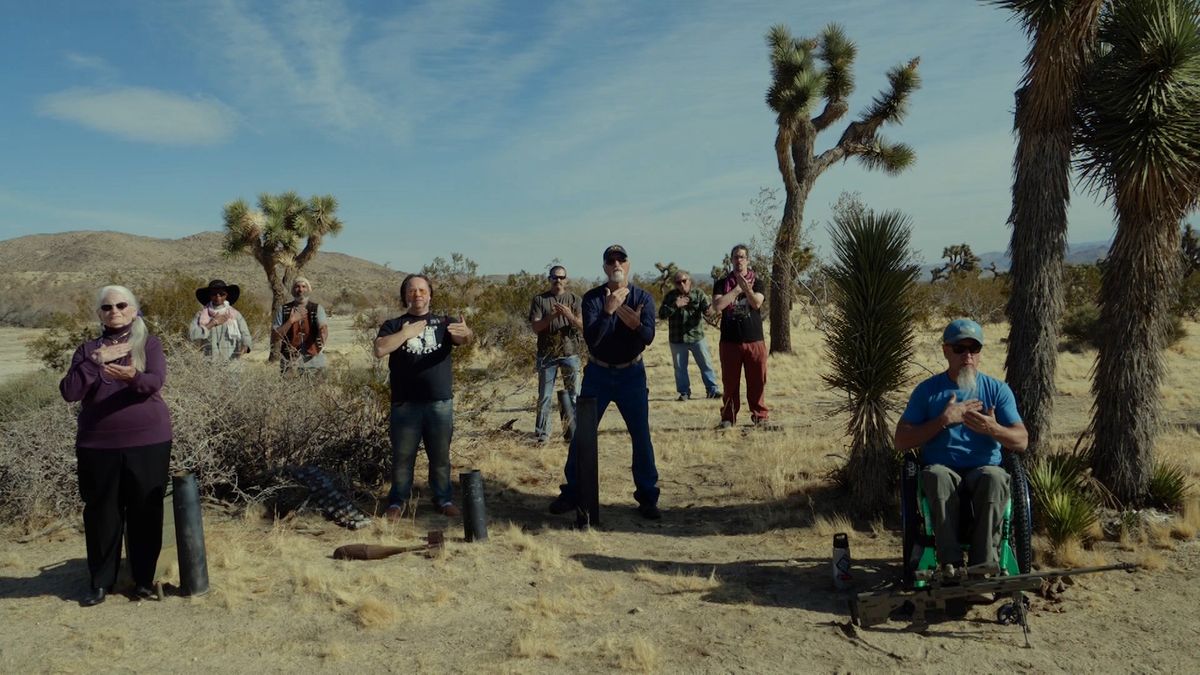In the popular imagination the desert is a wasteland, suited for post-apocalyptic narratives like the Mad Max movies. Some artists living and working in the Southern California desert would dispute that notion, and instead believe that a creative narrative can be drawn from its open spaces, its history and even its inhospitable environment. High Desert Test Sites (HDTS), a project which has inspired a generation of visitors and emulators in search of art and revelation in the desert, has just launched its latest iteration, The Searchers (until 22 May), with nine art installations dotting the high desert region around Joshua Tree, California.
Celebrating its return to live programming and its 20th anniversary, the exhibition kicked off with a weekend of tours led by HDTS’s director Vanesa Zendejas and guest curator Iwona Blazwick. The latter is director of London’s Whitechapel Gallery and has brought six artists from the East Coast and from abroad, to add to the three regional artists in the mix. While the event maintains a certain do-it-yourself aesthetic, both the presentation and the works are more polished and better mapped than before.
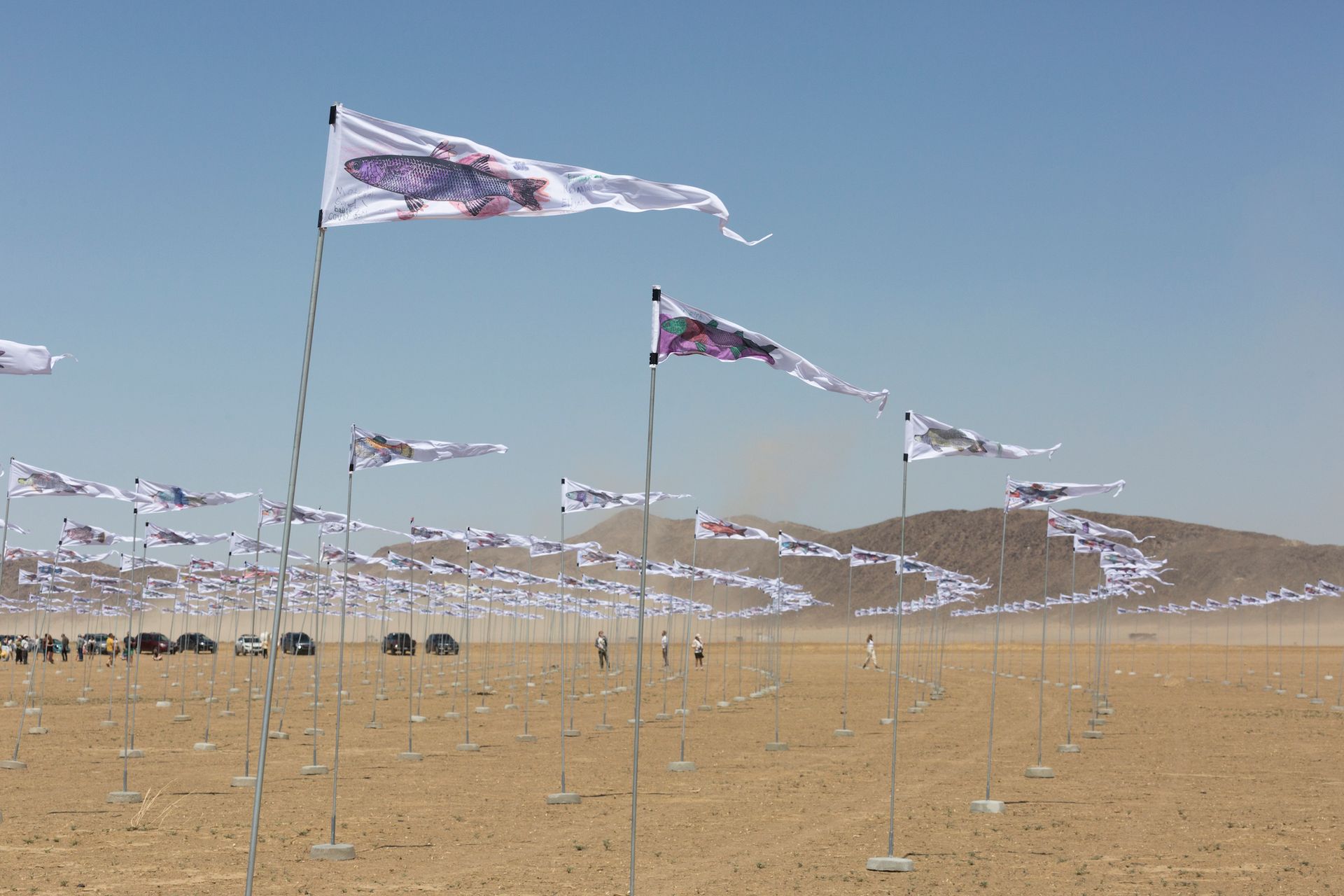
Gerald Clarke, Earth Memory, 2022 Courtesy the artist and High Desert Test Sites, photo by Sarah Lyon
“Context is everything,” says artist Andrea Zittel, a key founder of the event, while driving her sports utility vehicle down a dusty road. “I love marrying all the artwork with the right situations.” Zendejas echoes that sentiment. “We really do try to site the work so that the tangential experiences along the way are a part of the whole thing,” she says. “And that’s kind of the magic of the desert.”
Zittel moved to Joshua Tree 22 years ago, purchasing five acres that eventually became a live-work compound called A-Z West. Her ecological, spare lifestyle became her art, celebrated in a landmark exhibition at the Museum of Contemporary Art in Los Angeles in 2007, which featured handmade clothing and self-sufficient living modules.
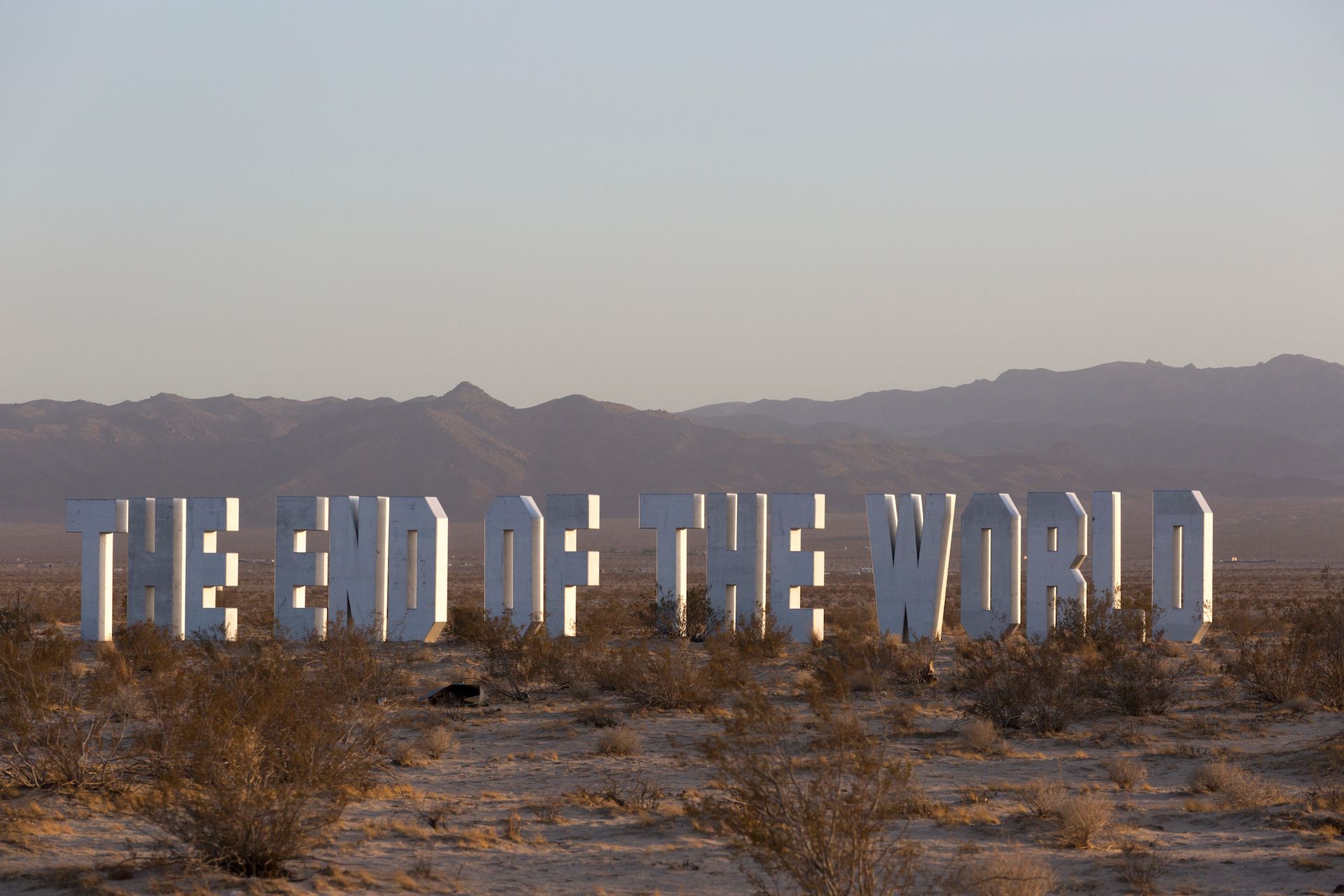
Jack Pierson, THE END OF THE WORLD, 2012 Courtesy the artist and High Desert Test Sites, photo by Sarah Lyon
HDTS began shortly after Zittel’s move to the desert, in collaboration with Lisa Anne Auerbach, Shaun Caley Regen, Andy Stillpass and John Connelly. They chose the name, High Desert Test Sites, in reference to nuclear test sites in nearby Nevada. “I liked this name because it is mysterious and compelling yet slightly sinister at the same time,” Zittel wrote in an Artforum article in 2005. Some of the sinister associations manifest in the current edition, such as the all-caps signage that reads “THE END OF THE WORLD”, looming large and surrounded by desert scrub in Twentynine Palms. Jack Pierson’s 2012 work is made of composite board painted silver. It is reminiscent of the glamorous Hollywood sign in Los Angeles, three hours away, but carries a heavy dose of black humor. The freestanding letters sit behind the Palms Restaurant, a popular roadhouse that was jammed on opening weekend.
Across the road is Paloma Varga Weisz’s Foreign Body (2022), a sculpture of a gigantic woman with a placid face and a giant log piercing her torso. The figure sits atop a small food stand that served vegetarian hot dogs during the exhibition's opening weekend, a nod to American roadside food stops with programmatic features. “For me it’s a very simple sign of nature going through a human being,” says Weisz, avoiding giving a definitive interpretation of the work. “It’s important that it’s absolutely not clear what’s going on.”
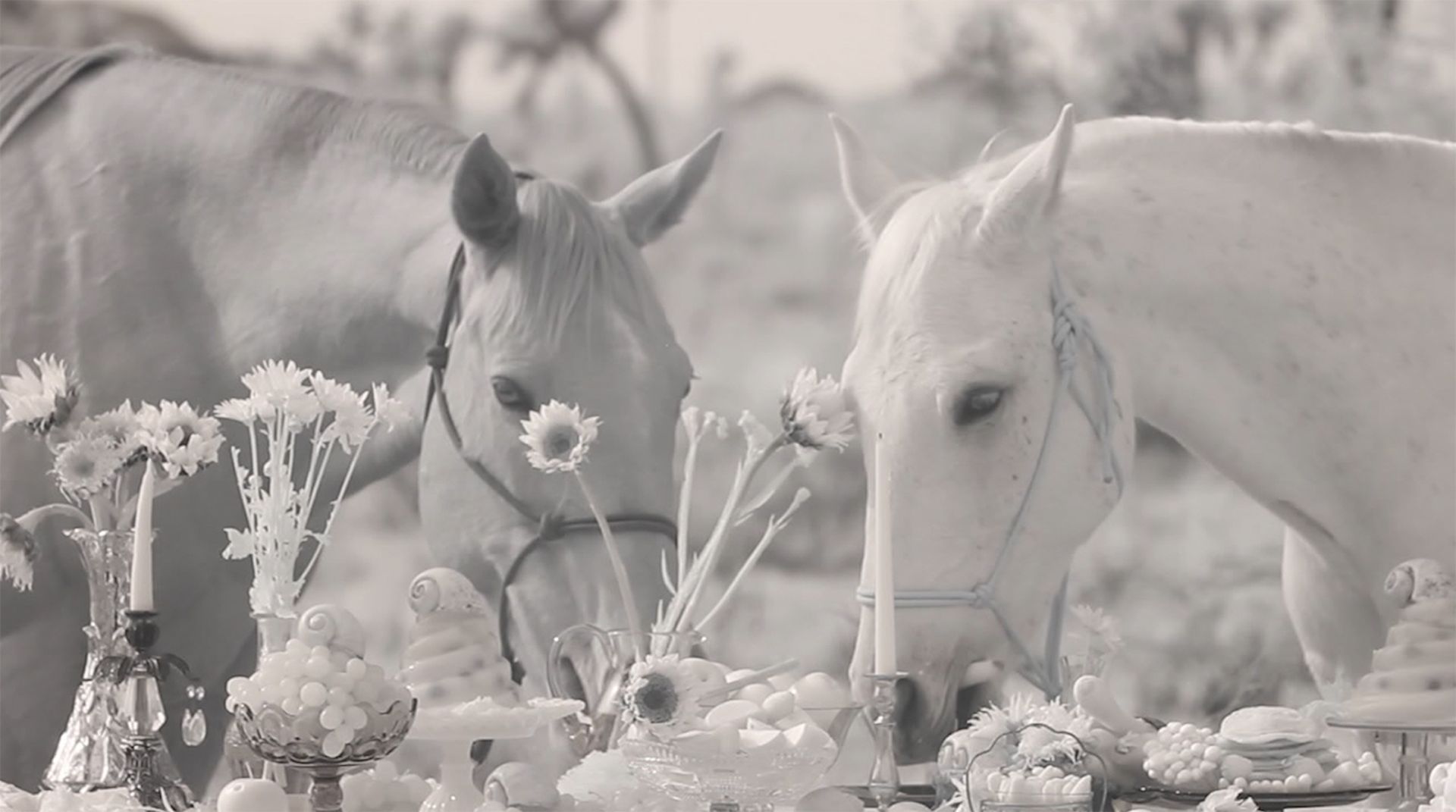
Still from Dana Sherwood, Other Dessert Landscapes, 2022 Courtesy the artist
The two videos in The Searchers, displayed individually in two locations, make use of local resources, as participating artists are encouraged to do. Erkan Özgen worked with retired Marines to make Harese (2020), a short in which the veterans slap their bodies, ready rifles and flick bullet shells to a propulsive beat. It’s a reminder that a major Marine Corps training base is just over the mountain range, occasional detonations from which light up the sky. Dana Sherwood worked with a local animal shelter to provide horses for her piece Other Dessert Landscapes (2022), in which the animals indulge at tables set with what look like lavish desserts—horse-appropriate food suspended in gelatin. Shot in infrared, it is strange and dreamlike.
Memories of the land are called upon in several works, including Shack I (2014) and Shack II (2016) by Rachel Whiteread, perhaps the most internationally known of the artists. These gray huts are located off a dirt road on private land and consist of two full-scale cement casts of the homestead houses that still dot the area. The cement was poured from the inside, then the walls removed, so what remains are impressions of the buildings inside-out. This is the first time the landowner, who commissioned the works several years ago, has allowed the public to visit.
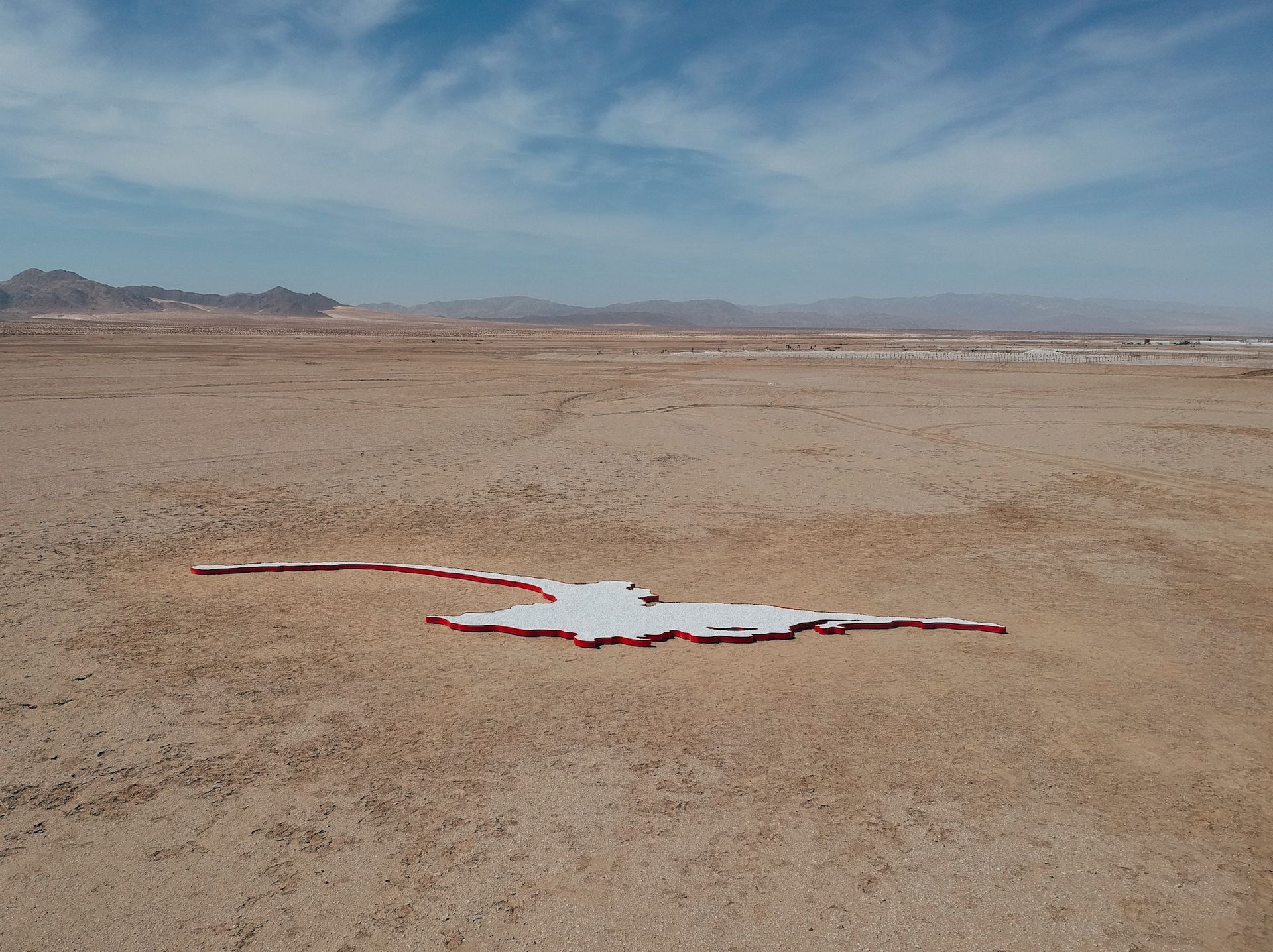
Alice Channer, Rockpool, 2022 Courtesy the artist and High Desert Test Sides, photo by Zack Simone
Also referring to place is Gerald Clarke’s Earth Memory (2022), with its hundreds of pennants flying on poles in Sunfair Dry Lake, each one printed with the image of a fish. Clarke is a member of the Cahuilla Indians, who once lived in the area. Off Ironage Road in Wonder Valley, Alice Channer has designed Rockpool (2022), a low-to-the ground, 60ft-long red container in the shape of an oil spill. It is filled with rock salt from a nearby salt mine. Other works in this edition of HDTS are Kate Lee Short’s Respite (2022), a building designed with pipes around the roofline to capture the sound of the wind, and Dineo Seshee Bopape’s Lerato le le golo (2022), which is made up of around 5,000 bricks handmade by local volunteers.
Blazwick has been visiting the area for two decades and was introduced to Zittel by a mutual friend. “I realised that what she built here was this utopian situation,” the curator says, “where she doesn’t differentiate between applied art and fine art, that it was all one vision.” Four years ago she was invited to curate the upcoming HDTS, but the exhibition was delayed until now by Covid-19.
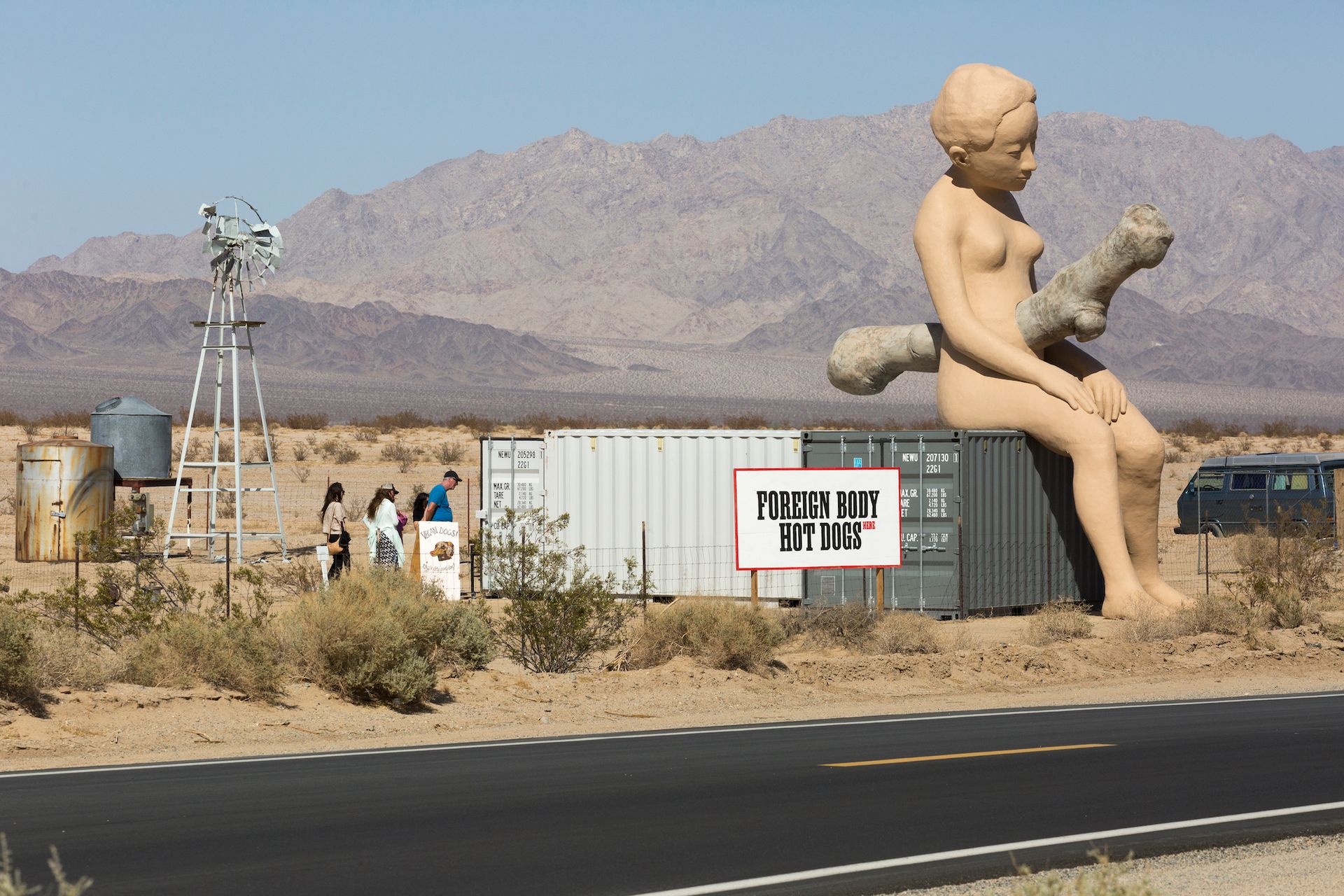
Paloma Varga Weisz, Foreign Body, 2022 Courtesy the artist and High Desert Test Sites, photo by Sarah Lyon
Over the years, Zendejas says HDTS has been attracting more and more visitors, although it is impossible to track the numbers since visitors explore the exhibitions on their own. Two obvious signs of success are overflowing motels and Airbnb-type lodgings during opening weekends and the other art events that have sprung up nearby. Those include the Joshua Treenial, which launched in 2015, and the better funded and promoted Desert X, whose third edition in the Coachella Valley took place last year and which has partnered with the government of Saudi Arabia on Desert X AlUla, whose second edition recently concluded.
Recently, Zittel stepped back from A-Z West, passing the running of HDTS and that complex to a team. She has moved to a modest house in Joshua Tree with, she says with a smile, “a 300-square-foot studio that was the garage”. After years of running a staffed studio producing artisanal textiles and ceramics, she is now turning to her own work again, although she has not yet figured out what form that will take.
- High Desert Test Sites: The Searchers, until 22 May, near Joshua Tree, California.


